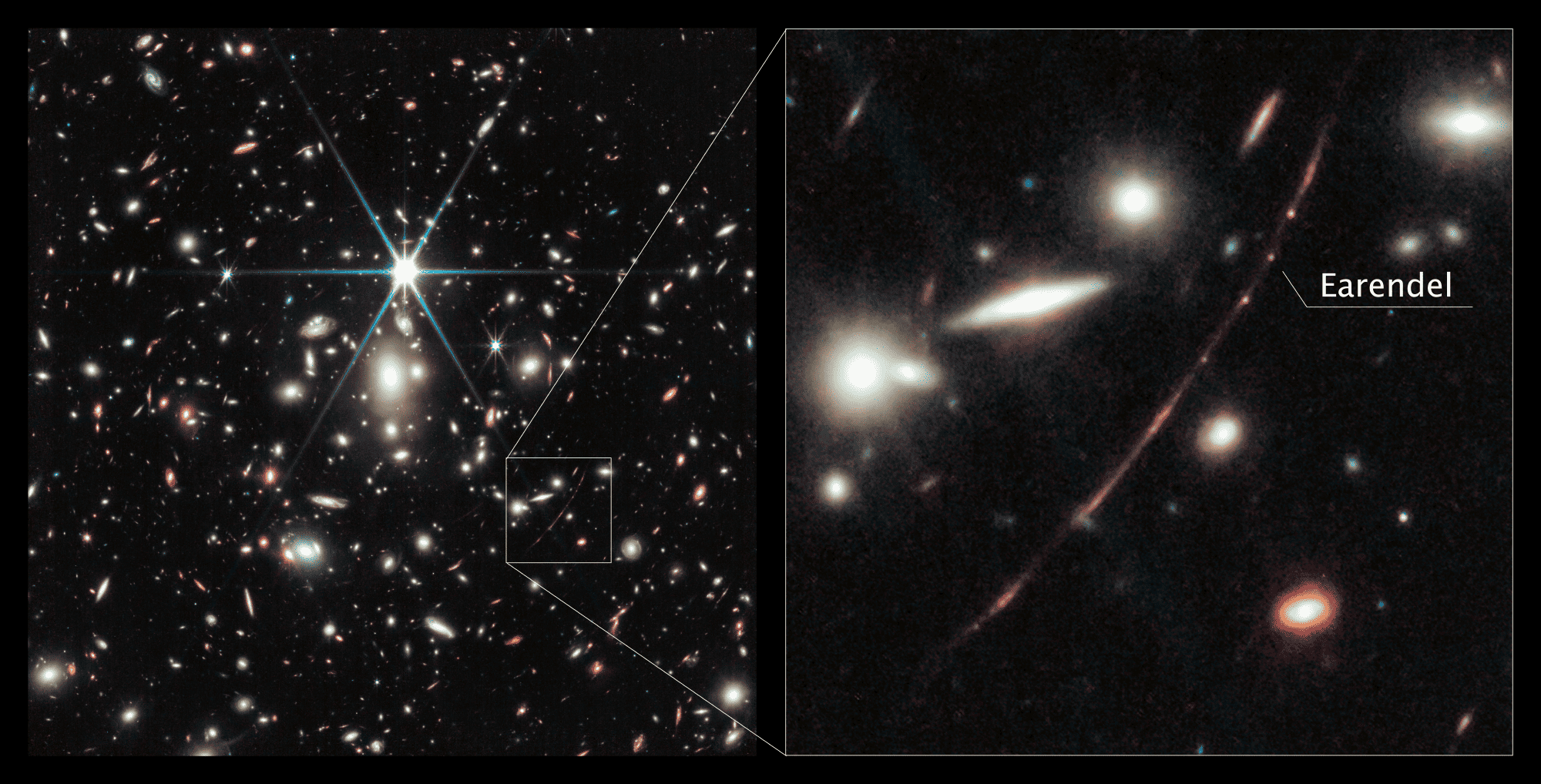
NASA’s James Webb Space Telescope, in collaboration with the Hubble Space Telescope, has unveiled an unprecedented view of the most distant star ever identified in the universe. The star, dubbed Earendel, resides within the Sunrise Arc galaxy and was formed during the Universe’s infancy, nearly 13 billion years ago. Recent observations show Earendel stands out as a massive B-type star, over twice as hot as our Sun and emitting a luminosity exceeding a million times that of our star’s.
A glimpse into the early Universe
Earendel was first spotted in 2022, but it’s only recently that the mighty James Webb Space Telescope zoomed in on the far-away star, revealing intimate details about its properties.
Concealed behind what NASA terms a “wrinkle in space-time,” Earendel resides in a galaxy cluster of such staggering proportions that it bends the very fabric of space-time, creating a cosmic lens that magnifies its presence. This phenomenon, known as gravitational lensing, has bestowed upon astronomers a rare gateway to the distant past, offering glimpses of a universe in its infancy.
The advanced Near-Infrared Camera (NIRCam) aboard the Webb Telescope exploited gravitational lensing to the max, wherein Earendel’s light was magnified by the gravitational pull of the colossal galaxy cluster WHL0137-08. Because this cluster lies between us and Earendel, space is warped — allowing astronomers to peer through this cosmic lens.
Gravitational lensing achieved a magnification factor of at least 4,000, allowing scientists to observe the star within just a billion years after the Big Bang. This achievement surpasses the prior record by a long shot. The previous record holder, named Icarus, was discovered by Hubble in 2018 — its light reached us about 4 billion years post-Big Bang. Additionally, Webb’s recent identification of another lensed star, a red giant observed 3 billion after the Big Bang, named Quyllur, adds to the expanding catalog of distant stars.
Remarkably, Earendel may not be alone. Webb spotted anomalies in Earendel’s color that indicate a cooler, redder companion star. The expansion of the universe caused this light to stretch to wavelengths beyond Hubble’s capabilities, making it detectable only by Webb.
Webb’s NIRCam also presents a treasure trove of potentially significant observations within the Sunrise Arc, the most profoundly amplified galaxy ever identified from the initial billion years of the universe. This magnified galaxy boasts young star-forming regions and well-established star clusters, some as small as 10 light-years across. On either side of the region of maximum magnification, running through Earendel, these features are mirrored by the distortion caused by the gravitational lens. Some of these stars may be older than Earendel.
Not too long ago, the smallest detectable cosmic objects from the early Universe were entire galaxies. Now, thanks to the mighty James Webb Space Telescope, astronomers can detect individual stars at the same distance or age. With cautious optimism, NASA now hopes to eventually pinpoint some of the earliest generations of stars. These primal stars would have been comprised solely of the elemental building blocks birthed from the universe’s inception – hydrogen and helium originating from the Big Bang.









